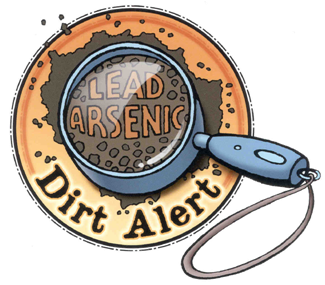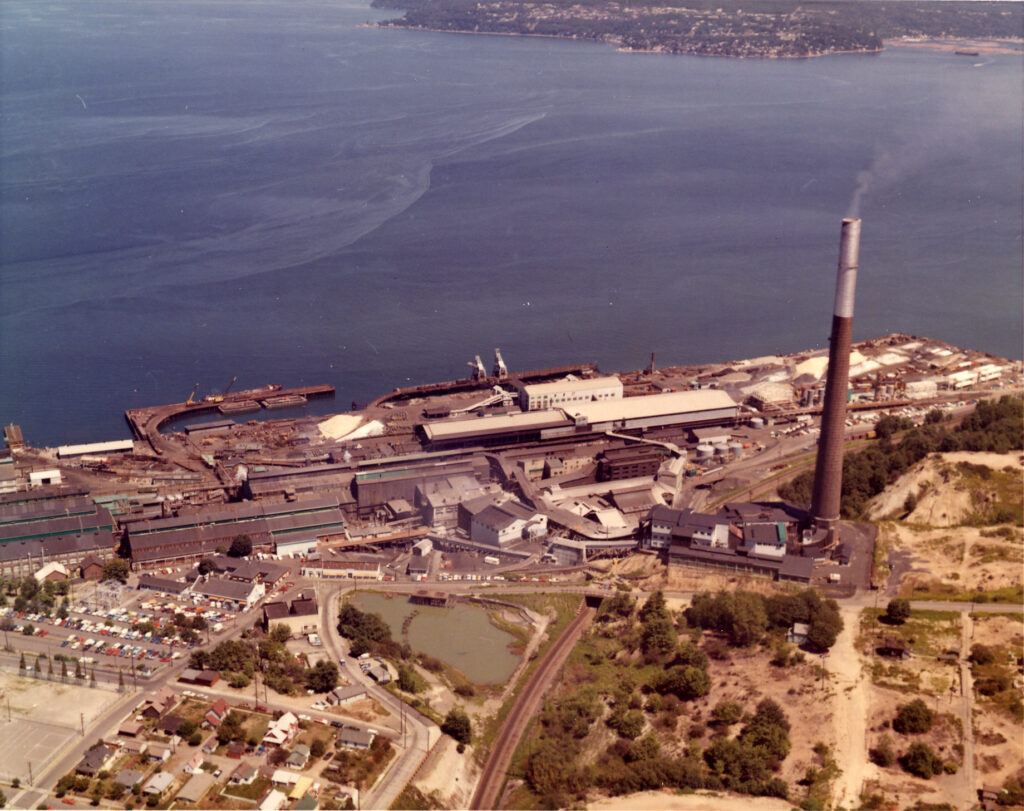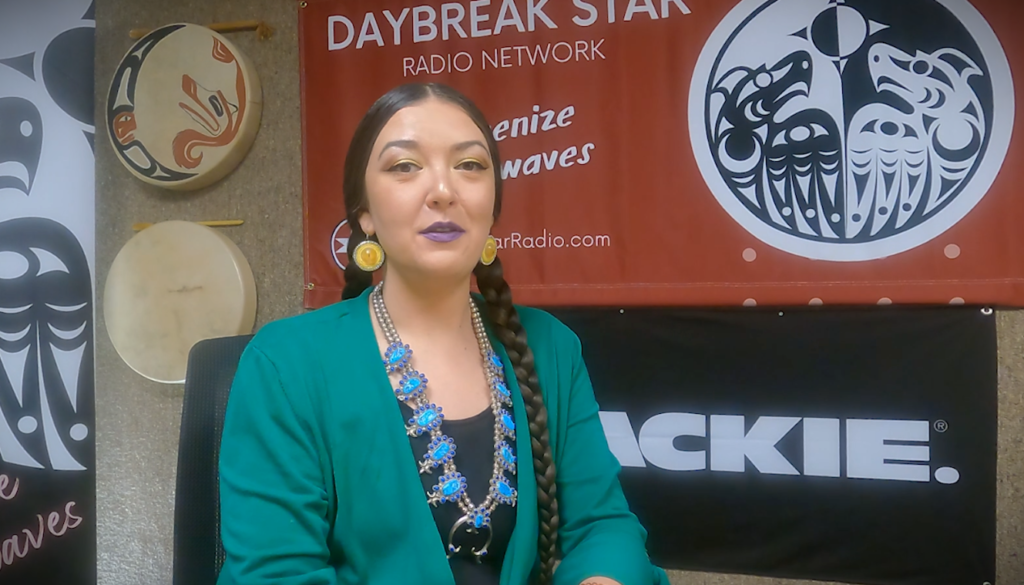Why Native Stories, and the Impacts of Land Contamination
Written by daybreak on August 3, 2024
Written by Leslie Jimenez
Introduction

Welcome to “Why Native Stories, and the Impacts of Land Contamination,” a groundbreaking collaborative initiative between United Indians of All Tribes, Daybreak Star Radio, Native communities, and King County Dirt Alert. This blog post and podcast series is dedicated to uncovering and sharing the profound stories of Native communities affected by the environmental legacy of the ASARCO Tacoma Smelter. Through this series, we aim to highlight the enduring strength and resilience of these communities, exploring how environmental challenges intertwine with their rights, culture, and future aspirations.
Historical Context
The story of the ASARCO Tacoma Smelter and its impact on the Native communities begins in the late 19th century, marking a pivotal moment in the history of the Puyallup Nation. In 1888, industrialists William Rust and Dennis Ryan established the smelter on land that had been part of the traditional territories of the Puyallup people. This land acquisition, seemingly justified by the Dawes Act of 1887 and the Doctrine of Discovery, starkly violated the sovereignty rights traditionally held by the Puyallup Nation. The smelter not only symbolized a significant loss of land but also marked the beginning of a long period of environmental degradation that would profoundly affect the community and its surroundings.
The smelter was operational for nearly a century, finally ceasing operations in 1986. During its active years, the smelter released large quantities of arsenic, lead, and other heavy metals into the atmosphere. Carried by the prevailing winds, these toxic substances settled across a vast area of Puget Sound, impacting not just the Puyallup but also neighboring Native communities, including the Muckleshoot, Duwamish, and Suquamish Nations. This widespread contamination of soil primarily affected the top 6 to 8 inches, posing long-term health risks and complicating land use for traditional practices and habitation.

Environmental Impact
The ASARCO smelter, during its century-long operation, left a toxic legacy that continues to affect the land and communities around it. The smelter’s emissions, which included high levels of arsenic, lead, and other heavy metals, were dispersed by the prevailing winds across significant portions of the Puget Sound region. These contaminants settled in the surface soil across Thurston, Pierce, Kitsap, and King counties, embedding toxins deep into the earth—areas that are recognized as the traditional homelands of several Native Nations.
The environmental degradation caused by these contaminants is profound and long-lasting. Arsenic and lead, in particular, do not degrade over time; they remain in the soil, posing ongoing risks to plant life, wildlife, and human health. The contamination affects agricultural productivity and complicates land management efforts, significantly impacting the ability of Native communities to engage in traditional food-gathering practices such as hunting, fishing, and foraging, which are central to their cultural and physical sustenance.
Health and Community Impact
The health implications of soil contamination from the smelter are severe and multi-generational. Exposure to arsenic and lead, even at low levels, can lead to a range of chronic health issues, including neurological damage, developmental delays in children, and various cancers. Communities living in proximity to the contaminated sites are therefore at an increased risk of these health problems, which compounds the social and economic challenges they face.
Removing these heavy metals from the soil is not only technically challenging but also prohibitively expensive on a large scale. Consequently, many affected areas remain untreated, with the burden of managing and mitigating the contamination often falling on the local communities themselves. Community-led initiatives have sprung up to tackle these issues, focusing on education about safe practices for land use, food cultivation, and community health initiatives aimed at reducing exposure.
The persistence of these metals in the environment and their insidious impact on health has galvanized community leaders and activists within these nations to call for more robust remedial action and support from federal and state governments. These efforts are part of a broader movement towards reclaiming not only land and health but also autonomy over how contaminated lands are managed and rehabilitated.
Sovereignty and Self-Determination
The struggle for sovereignty and self-determination is at the heart of the Native communities’ response to environmental contamination. The historical and ongoing impacts of land dispossession and environmental degradation challenge the very foundation of tribal sovereignty. Native Nations, including the Puyallup, Muckleshoot, Duwamish, and Suquamish, are actively working to reclaim their rights over traditional lands and resources compromised by pollution.
This reclamation is not just about environmental cleanup but encompasses a broader assertion of rights and governance. Tribes are advocating for greater involvement in decision-making processes at all levels of government regarding land management, environmental protection, and remediation efforts. This includes pushing for laws and policies that recognize the unique legal status of tribes, their connection to the affected lands, and their right to participate in crafting solutions that affect their communities and ancestral territories.
The Power of Storytelling
Storytelling is a powerful tool for advocacy and cultural preservation, particularly in the context of environmental justice for Native communities. Through the mediums of podcasts, blogs, documentaries, and community meetings, Native storytellers are able to share their experiences, educate broader audiences, and mobilize support for their causes.
These stories do more than recount the past; they are acts of resistance and empowerment. They serve to educate both Native and non-Native audiences about the complexities of environmental contamination and its intersection with issues of justice, health, and sovereignty. By authoring their own narratives, Native communities ensure that their voices are heard in the larger dialogue about environmental policies and practices. They also reinforce cultural identity and unity, which are crucial for collective action and healing.
Looking Forward
As Native communities face ongoing environmental and political challenges, they are also crafting visions for a sustainable and sovereign future. These visions are rooted in a deep understanding of traditional knowledge systems and contemporary environmental science, aiming to integrate these perspectives to foster resilience and renewal.
Efforts are focused on several fronts:
- Environmental Remediation: Innovative approaches to soil remediation and pollution control are being developed, with an emphasis on affordability and effectiveness. Community-led projects often incorporate traditional practices that are both culturally significant and ecologically beneficial.
- Cultural Revival: There is a strong movement towards reclaiming and revitalizing traditional practices related to land use, such as agriculture, forestry, and water management. These practices not only help manage the land sustainably but also strengthen cultural identity and community cohesion.
- Political Advocacy: Native nations are increasingly assertive in advocating for policy changes that recognize their sovereignty and environmental rights. This includes lobbying for more stringent environmental regulations and better implementation of existing laws to ensure that their lands are protected for future generations.
These initiatives are not just about coping with the impacts of past actions but are proactive steps towards creating a thriving future for Native communities.
Conclusion
Through this blog post and podcast series, “Why Native Stories, and the Impacts of Land Contamination,” we have delved deep into the historical, environmental, and health impacts of the ASARCO Tacoma Smelter on Native communities. More importantly, we have witnessed the resilience, creativity, and determination of these communities as they navigate and overcome these challenges.
The stories shared here are testament to the enduring spirit and vibrant culture of Native peoples who, despite facing significant adversities, continue to fight for their rights, health, and sovereignty. As we move forward, it is crucial that these voices are not only heard but are also heeded, as they hold key insights into sustainable living and coexistence with our environment.
The journey of awareness and action does not end here. It is incumbent upon all of us—Native and non-Native alike—to continue supporting these communities in their quest for justice and sustainability. Their struggle is a poignant reminder of our shared responsibility to the land and each other.
Articles in this series:
yəhaw̓: Indigenous Creative Collective Story
Extractive Values and Indigenous Rights: A Call to Action with Jay S. Ritchie





